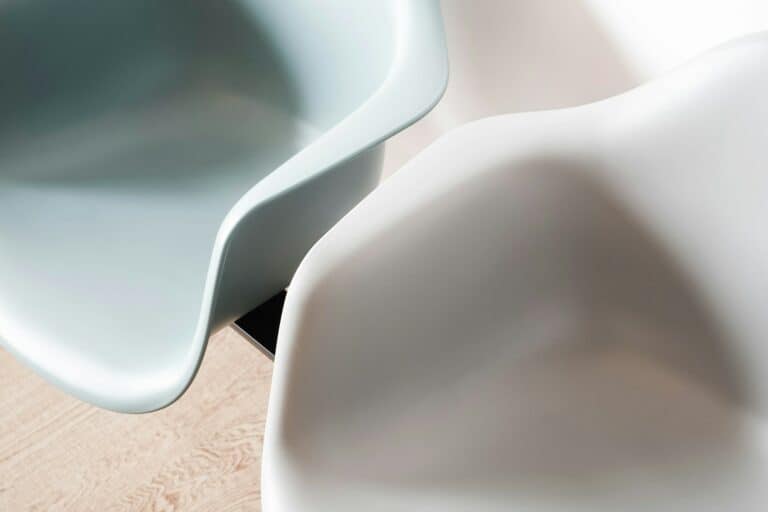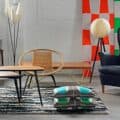In today’s digital age, the proliferation of replicas and knock-offs of iconic design furniture is rampant, with the internet serving as a bustling marketplace for these imitations. Platforms such as Amazon and eBay, as well as many reputable interior design retailers, have become hotspots for finding these fake creations. This begs the question: how can design aficionados distinguish genuine masterpieces from mere copies, thereby supporting authentic creativity and fighting intellectual property infringement?
Consider the scenario of stumbling upon a “DSW” chair, supposedly by Charles and Ray Eames, listed for less than €100 – a deal that seems too good to be true. Rightly so, as it turns out to be a replica. With just a few keystrokes, names like Eero Saarinen, Joe Colombo, Arne Jacobsen and Gino Sarfatti flash across the screen, their legendary designs tagged with incredibly low prices.
Why such a huge price difference? Well, the answer lies in the mass production of these knock-offs by companies, particularly in regions such as the UK, where design copyright laws have historically been murky. But change is on the horizon. The Enterprise and Regulatory Reform Act of 2013 brought UK copyright law more in line with European standards, where protection for manufactured goods will extend for 70 years after the death of the designer, as opposed to the UK’s previous limit of 25 years.
Despite these legislative changes, the challenge of identifying and choosing authentic pieces over copies remains, underlined by the ease with which replicas are distributed online. Here we offer insightful guidance on how to separate the real from the fake, champion originality and uphold the legacy of iconic design.
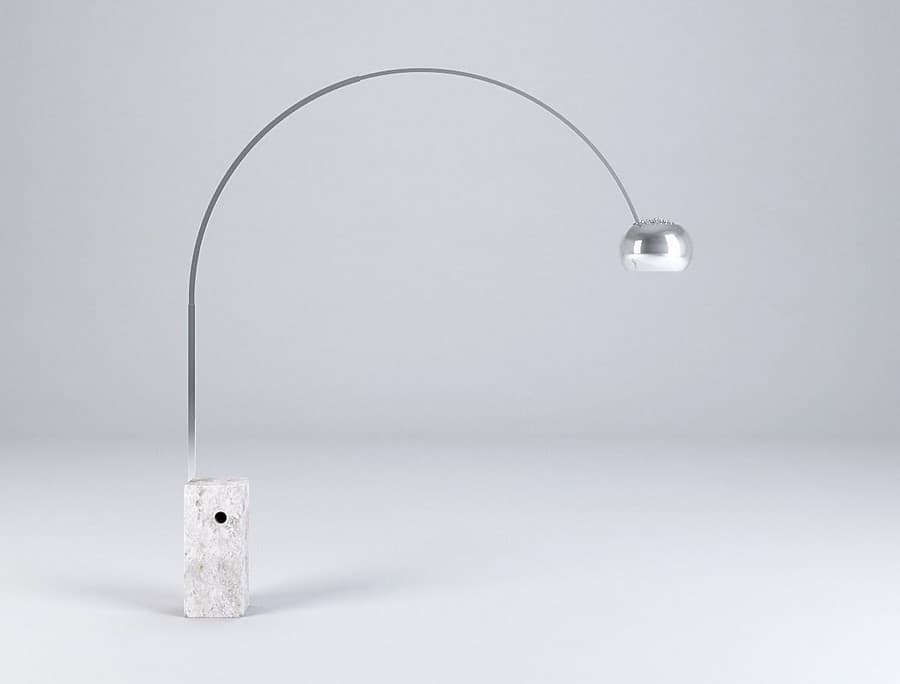
A copy is obvious: FALSE
The myth that identifying a fake piece of design furniture is easy couldn’t be further from the truth. In reality, the closer a replica is to the original, the more difficult it becomes to distinguish between the two, casting a shadow of doubt over even the most discerning of minds. Intellectual property law relies on the principle of similarity rather than difference when determining counterfeits. Essentially, if a side-by-side comparison suggests that two items are virtually indistinguishable to the casual observer, then the term ‘counterfeit’ can rightly be applied. However, this determination often ventures into the realm of subjectivity.
Can you tell the real from the fake?
Distinguishing an original from a replica requires a keen, trained eye, finely honed by experience and knowledge. E-commerce platforms selling designer furniture often muddy the waters for consumers, using the name of the original product and the prestige of the designer’s biography to blur the lines of authenticity. They may even display images of the real thing rather than accurate representations of the replicas they’re selling, weaving a web of deception that’s difficult to unravel. Such sophisticated counterfeiting underscores the importance of vigilance and informed purchasing decisions, and illustrates that the fight against counterfeit design is not only a legal one, but also deeply rooted in consumer awareness and education.
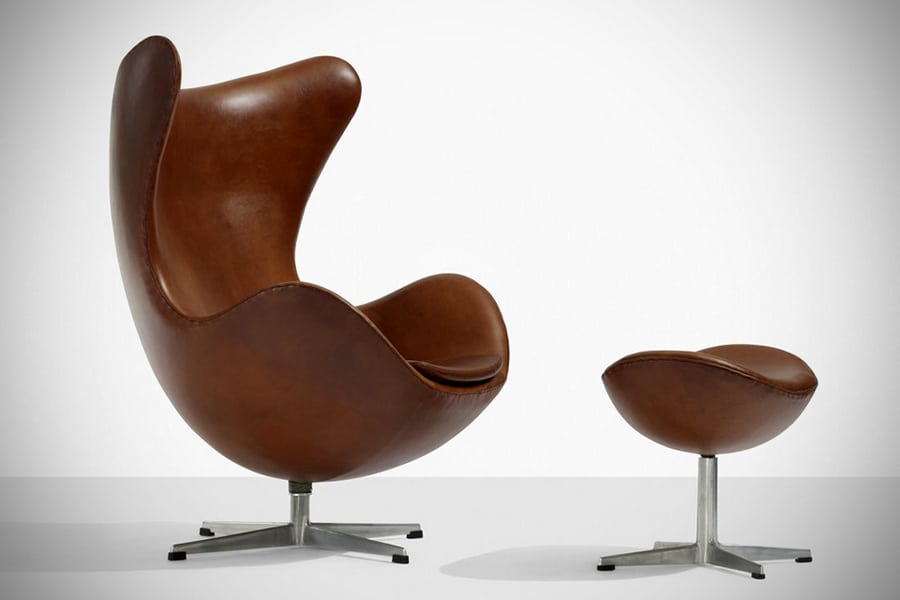
There are ways to know if a piece is an original: TRUE
It’s a common misconception that distinguishing an original piece of designer furniture from a fake is like looking for a needle in a haystack. In reality, there are several indicators that can help the discerning connoisseur verify authenticity. It is true that features such as stamps, certificates of authenticity, serial numbers and even the designer’s engraved signature or logo are traditionally regarded as hallmarks of a genuine piece. However, it’s important to recognise that these symbols of authenticity are not beyond the reach of sophisticated counterfeiting operations.
A telltale sign of a fake is often the price. An offer that seems too good to be true, especially one that is significantly below market value, should immediately raise red flags and warrant closer inspection. For those treasure hunters scouring the aisles of a flea market or scrolling through online listings, the most reliable method of verification is to consult the official dealer network of reputable design publishers. Many publishers are willing to authenticate a vintage piece from photographs, a process that may take time and effort, but is invaluable. This step can prevent the financial and emotional toll of investing in what turns out to be a clever fake. Investing this time and effort upfront can save a lot of regret and ensure that your purchase is not only a piece of design history, but also a wise investment.
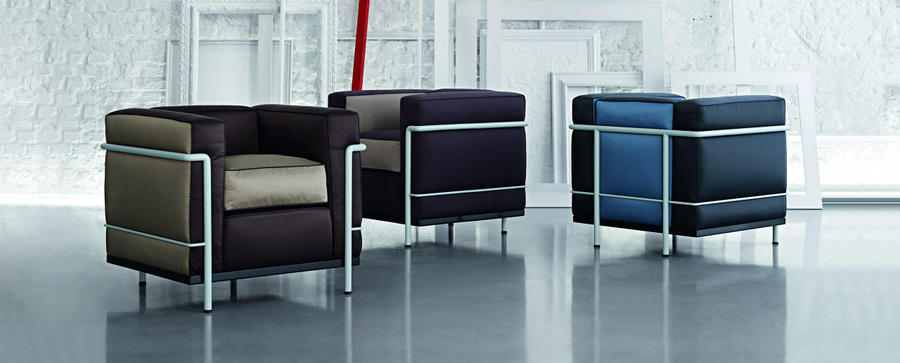
All knockoffs are made equal: FALSE
Far from being homogeneous, the furniture counterfeiting landscape is a realm of varying degrees of imitation and deception, as Lionel Pithoud, director of Knoll France, explains. Counterfeits can essentially be divided into two distinct groups.
The first group includes imitations that can easily be classified as “cheap”. These are the products that mislead consumers by pretending to be something they are not, often found under labels such as “replicas”, “inspired by” or “after XX”, which attempt to lend an air of authenticity or homage but fall short of genuine representation.
An example of a terrible imitation. Unfortunately, most fakes today are harder to tell apart from the real thing.
The second category is more nuanced and is called “inspiration”. These items are present in the consumer market and while their design may allude to iconic pieces, they do not explicitly claim to be direct replicas. Such items evoke the essence of original works without making a clear reference to them, and thus exist in a grey area of design homage.
Despite the labels, the price difference between original pieces and their imitations can be staggering, often as much as tenfold. Design icons, particularly those from the golden era of the 1950s and 1960s, and the work of stalwarts such as Philippe Starck, are at the forefront of this replication phenomenon.
Michel Richard, director of the Fondation Le Corbusier, reflects on this trend with a mixture of recognition and resignation. While imitation could be construed as flattery or homage, it offers little comfort to those dedicated to preserving the integrity and legacy of original design. This nuanced perspective on counterfeiting underscores the complexity of the issue, highlighting the tension between imitation as a form of admiration and the dilution of original creative genius.
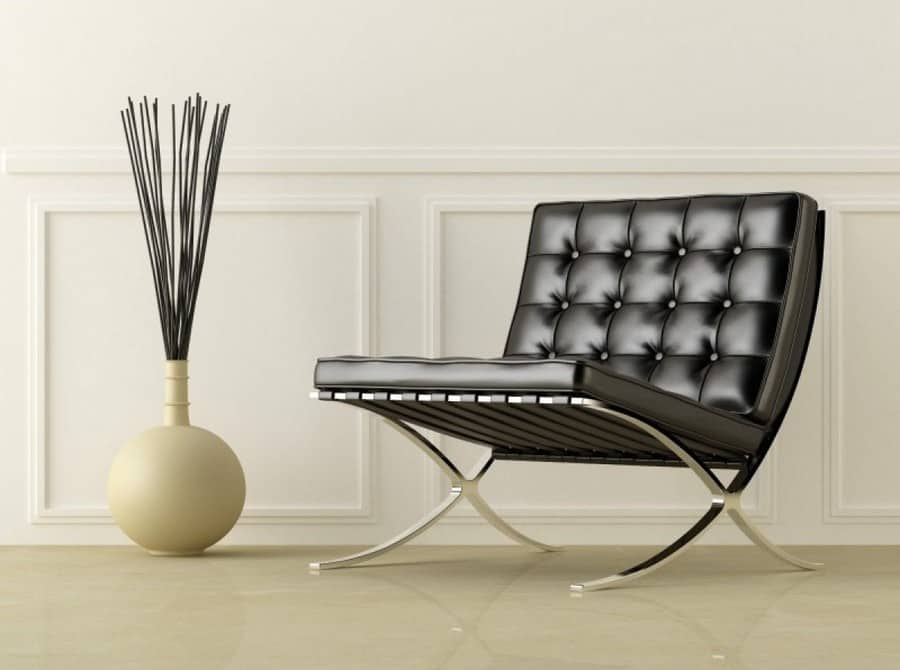
The fight against counterfeit is fierce: TRUE
The battle against counterfeit design furniture is intense and unrelenting. Design publishers are on constant alert, playing the role of relentless pursuers in their quest to eliminate fake replicas. Their arsenal against counterfeiting includes vigilant monitoring, seizing counterfeit goods, halting distribution, destroying fraudulent stockpiles and seeking financial compensation for damages. Efforts to shut down counterfeit websites resemble a never-ending battle, reminiscent of the mythical Hydra, where for every site that is taken down, two more spring up in its place.
But the anti-counterfeiting strategy goes beyond mere suppression. “To stay ahead of the counterfeiters, you have to innovate constantly,” explains Gianluca Armento, CEO of Cassina. This philosophy is widely shared by design publishers, who use their creative and legal rights to innovate. Working with the descendants of the original designers, copyright holders and dedicated foundations, they not only preserve the legacy of classic designs, but also enhance it through refined details, fresh colour schemes and the use of cutting-edge materials, while remaining faithful to the designer’s original vision.
Education is also an important part of this battle. Isabelle de Ponfilly, CEO of Vitra between 1998 and 2021, stresses the importance of educating the public about the value of owning authentic pieces as opposed to fakes. To this end, many publishers, either collectively or individually, have launched educational campaigns aimed at fostering an appreciation of original design. These initiatives serve not only to protect the integrity of the designs, but also to cultivate an environment where original creation is valued and celebrated, ensuring that the legacy of iconic designs is preserved for future generations.
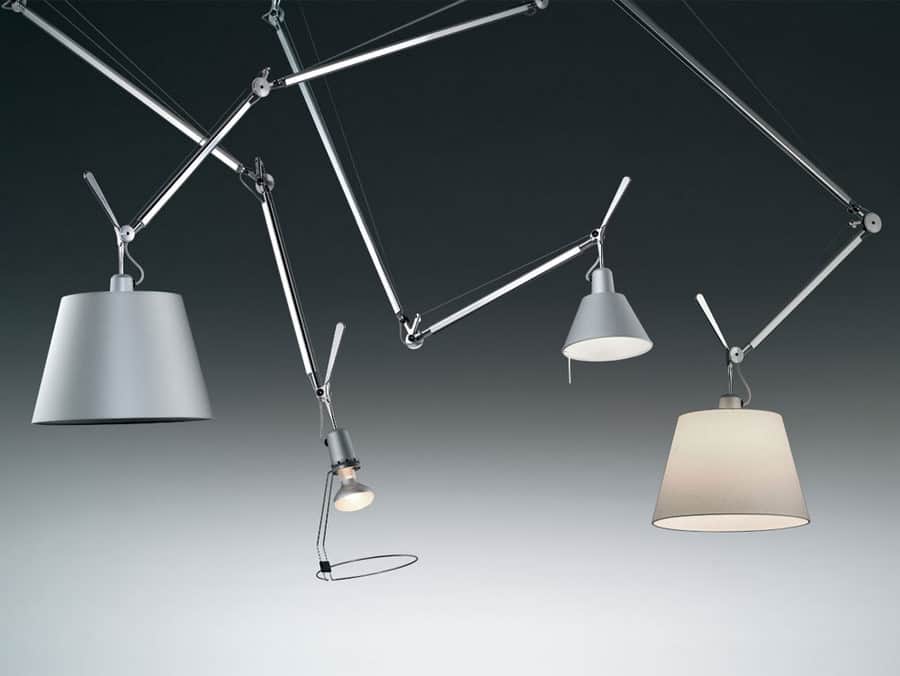
There is no risk to buy a knockoff: FALSE
The belief that there are no consequences for buying a fake is a dangerous misconception. At its core, a fake is a counterfeit, which makes it not only unethical, but downright illegal.
The implications of such purchases extend far beyond the initial transaction. When counterfeiting operations are uncovered, it’s not just the manufacturers who are in legal jeopardy; consumers can also be accused of “concealing a counterfeit”. The consequences can be severe, including up to three years’ imprisonment, fines of up to €300,000, customs sanctions and other penalties.
Opting for a seemingly budget-friendly counterfeit version of a design product therefore carries significant legal and financial risks. It’s a stark reminder to tread carefully and consider the wider implications of choosing a counterfeit item over an authentic piece, and underlines the importance of making informed and legal choices in the world of design.
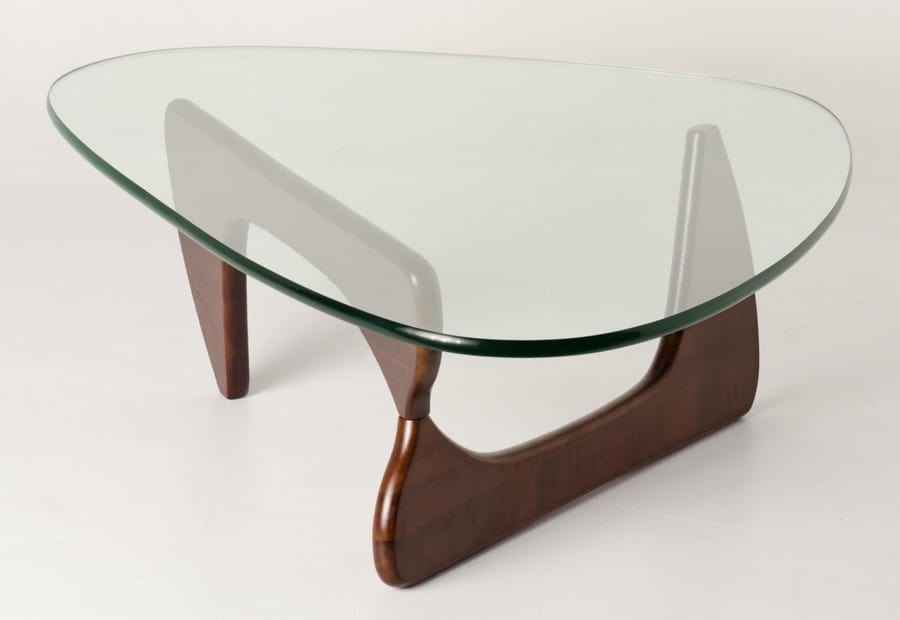
A knockoff is cheaper: TRUE
It’s an undeniable truth: knock-offs come with a cheaper price tag, but that affordability often reflects compromised quality. The equation is simple – cutting costs invariably means cutting corners on the quality of materials and craftsmanship. How else could replicas be offered at a fraction of the price of authentic pieces without sacrificing anything?
Furthermore, true design pieces should be seen not just as pieces of furniture, but as tangible investments. Authentic designs, crafted with the finest materials and expertise, are intended not only to adorn spaces today, but also to be heirlooms for tomorrow, capable of being passed down through generations while maintaining, if not increasing, their market value. In stark contrast, an imitation, devoid of authenticity and enduring quality, has essentially no value beyond its immediate functional use. Unless, of course, it is destined to be dramatically destroyed in the climactic explosion of an action film. In essence, investing in fakes is like setting fire to money.
Jaime Gillin, in “The Real Cost of Rip-Offs”, articulates this sentiment perfectly, pointing out that authentic designs are indeed investments. Yes, they have a higher upfront cost than knock-offs, but they are made with the highest quality materials, designed to last for generations and maintain or even increase in value over time. On the other hand, knock-offs tend to be short-lived. Made from inferior components such as inferior foam, fabrics, metals and joinery techniques, they deteriorate quickly. This stark contrast underlines the long-term value and sustainability of choosing original design pieces over ephemeral replicas.
The Bottom Line
The dilemma of wanting a specific piece of design without the budget to match doesn’t have to lead you down the path of settling for knock-offs. There is a treasure trove of authentic, vintage mid-century classics waiting to be discovered on platforms such as eBay, Craigslist and estate sales. These venues often offer the opportunity to purchase verified originals at prices that won’t break the bank, providing a legitimate and fulfilling alternative to counterfeit purchases.
Ultimately, the choice between an authentic piece and a counterfeit is like choosing between a real Hermès bag and a fake one. While the difference may be imperceptible to the outside observer, the knowledge of its authenticity – or lack thereof – rests with you. Owning a fake, despite its superficial resemblance to the real thing, carries a weight that transcends physical appearance. The true value of an original isn’t just in its aesthetic appeal or design integrity, but in the authenticity and history it brings to your space. And that, without a doubt, is the epitome of cool.


